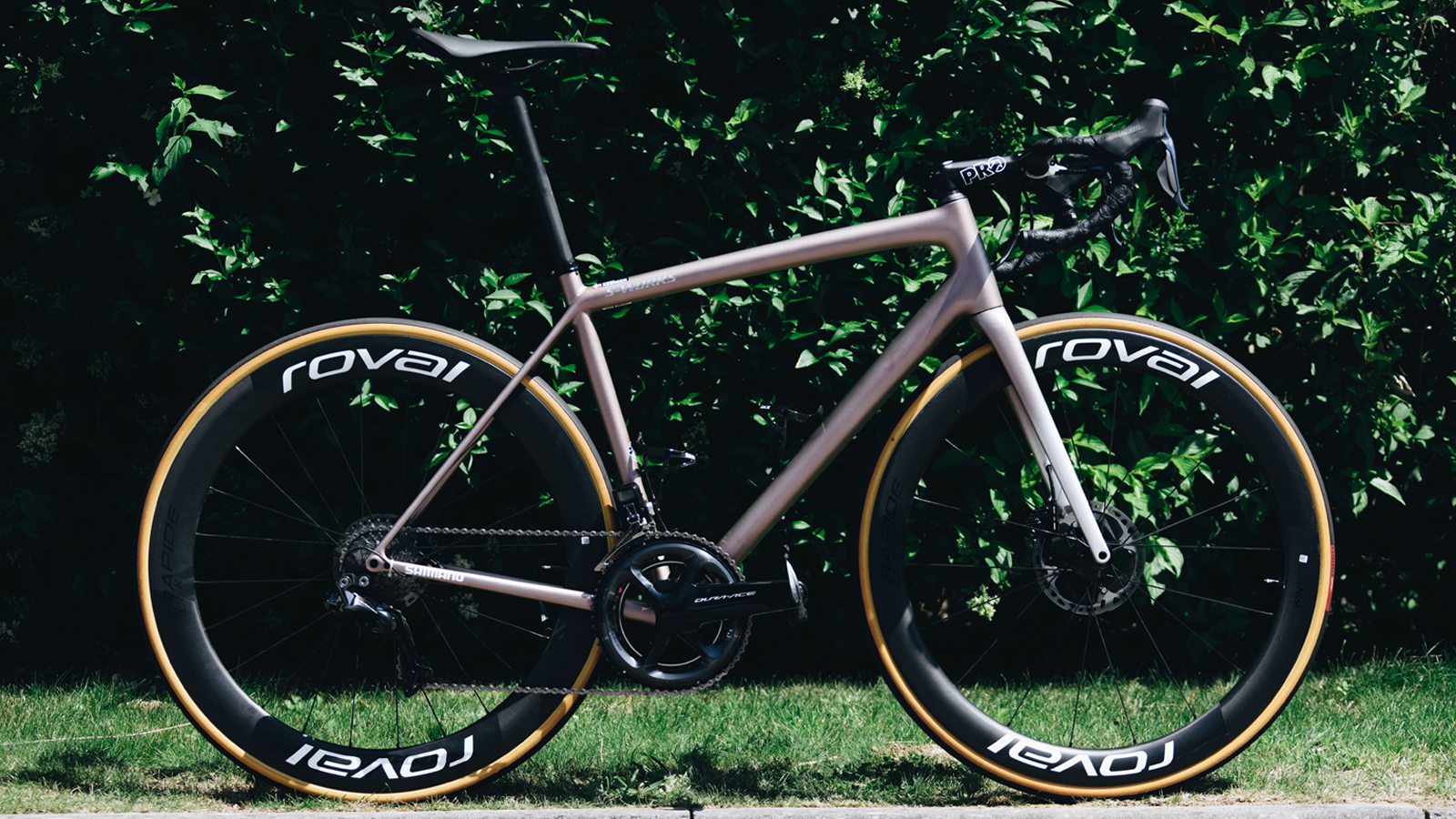How to make your bike lighter: Weight weenie top tips
Although aero is the dominant force these days, most of us still get excited about making our bikes lighter

For decades, probably since the dawn of the bicycle, cyclists have been trying to make their bikes lighter. I'm sure Octave Lapize - the first rider to crest the Col Du Tourmalet in the Tour de France back in 1910 - wished his bike was lighter as he winched it skyward. Fast forward several decades and the British time trial scene was gripped by 'drillium' with competitors drilling every and any metal component in sight in a bid to save weight.
Today, the understanding of how to ride faster is more rounded, and aerodynamics plays a greater part. But hill climb events still see modified lightweight bikes dripping in carbon fibre, sawn-off handlebars and drilled-out derailleurs.
Regardless of the era, if you're riding a bike, you are having to propel the weight of the machine with your own effort. As a result of this, cyclists are often preoccupied with shaving weight from their machines and even small weight savings bring excitement.
In recent years, as aerodynamic understanding and knowledge have improved and become more widely available, aero is now seen as king. The general understanding is that an aerodynamic bike setup will still be faster than a featherweight bike on all but the steepest of climbs.
This is critical for racers and professional riders, but for the majority of us, knowing our bikes are lightweight and saving weight is still a welcome morale boost. Below we have outlined a few weight-saving upgrades and tricks to help lower the weight of your bike.
1. The cockpit
It may sound like an insignificant saving but swapping your alloy handlebars for the carbon-fibre equivalent can free up as much as 80g. You could go one step further and cut them - a modification I don't recommend if you're going to use the bike daily - but the rounded, non-aero, non-integrated bars are easily the lightest options currently on the market. I'd recommend the Fizik Cyrano R1 Bull Carbon bar which tips the scales at a reasonable 200g. Don't be tempted to buy cheap, lightweight carbon components online if you aren't sure of the quality. I've seen some no-name carbon handlebars fail and whilst I'm all for weight saving, personal safety comes first.
While it's not rated in our best bar tape guide for obvious reasons, wrap your bars in the 29g Deda Traforato Perforated Bar Tape and you've got one of the lightest (reliable) cockpits in the game.
The latest race content, interviews, features, reviews and expert buying guides, direct to your inbox!
A favourite stem amongst the weight weenie crowd is the Kalloy Uno model which can be picked up for well under £50 / $50 and is under 100 grams in most sizes. This stem offers great bang for buck.
2. Tyres and inner tubes
If your bike has come with slightly cheaper / heavier tyres as standard, upgrading them can provide some solid weight savings and improve ride quality. The cheapest upgrade here also brings with it the most significant catch - minimised puncture resistance. That said, for many weight weenies, it's a risk worth taking. Some of the popular options in this regard come from the Continental and Veloflex stable. Both respective companies make some of the best road bike tyres with options that weigh in at around 205g a tyre in 23 or 25mm guise - the venerable Grand Prix 5000 and Record models are cases in point. Not only will a lighter tyre shed weight it will also improve the ride quality and feel.
Another quick weight reduction measure is to ditch your standard butyl inner tube for latex inner tubes or go one step further and call upon the thermoplastic elastomer-based Tubolito Tubo or Pirelli P Zero Smartube. At £30 it might be an appreciably expensive inner tube option but with a total saving of around 80g at both ends - it's an easy win.
3. Wheels
In an attempt to keep costs to a minimum, manufacturers often spec their entry to mid-level bicycles with more durable components - particularly when it comes to wheelsets. Alloy hoops have become the go-to option in this regard and are typically heavier than carbon fibre but that's not always the case. If your wheels are on the heavier side, upgrading them will probably provide one of the biggest weight savings in one go. With the potential to save up to half a kilo depending on the wheelset you go for.
Finding the best lightweight wheels requires a bit of research as the lower the weight the higher the price. While many enthusiasts aspire to own a set of 1,100g Lightweight Meilenstein wheels, for the average cyclist, they're too pricey to justify as an upgrade.
There are other 'heavier' more robust options that are more than up to the task: take Cadex's 42 wheels (1,265g) for example or the 1,248g Roval Alpinist wheelset - both options of which can be used all year round, reliably.
4. Components and accessories
Another simple weight-saving measure comprises substituting items such as your saddle, seat post and pedals for lightweight alloy or carbon-fibre alternatives. These modifications are also somewhat cheaper than changing your wheels and drivetrain.
If you're going to be spending a lot of time in the saddle and not just targeting hill climbs in particular, there are a raft of semi-lightweight carbon saddle options from Fizik and Cadex. While Fizik's 153g Antares and 166g Arione Versus Evo 00 are two of the best road bike saddles around, it's the 135g Cadex Boost saddle that is turning heads owing to its stellar meld of comfort and weight.
Another quick win is adding a lightweight seatpost (Ultimate USE Evo 3k Carbon post is a personal favourite) and binning unnecessary items such as bottle cages, swapping out all the regular steel screws and bolts for titanium versions, and upgrading to lightweight skewers.
You can also look at cutting the steerer tube and seatpost when every gram counts. Depending on how much seatpost you use, chopping off the excess can actually save a good amount of weight. Consult your local bike shop on doing this so you can ensure you adhere to the recommended minimum insertion height in the frame.
5. Weight Weenie tips and tricks
There is a range of easy things you can do to save weight on your bike that don't cost the earth and are nice morale boosters. I used to enjoy doing these things for weight-conscious customers as a mechanic.
Trimming excess length from cables and handlebar tape can add up to a good few grams if you have already made a lot of big weight savings with component upgrades. Optimised cables will also aid aerodynamics at the front of the bike if your cables are exposed. Brake and gear cables and brake hoses are often left on the long side at the factory, so cutting them to be as short as possible can save a decent amount of weight. There is a line to tread here, too short and you will detract from braking and shifting performance.
Handlebar tape and bar end plugs can also offer up a weight saving. Expanding bung-type handlebar plugs can be a lot heavier than simple plastic handlebar plugs, I like to keep a lightweight pair of plugs to transfer across regardless of the tape I'm using. Thick handlebar tape can often be heavier, thin cork tape is often lightest and if you space your handlebar tape wraps as much as possible you can save on excess bar tape.
Slightly controversial it seems, but throw your valve caps and locknuts in the bin to save some weight, if your valve stems rattle just secure them with some tape. Swap our heavier steel bolts for lightweight alloy ones on bottle cage bolts, top cap bolts and other non-proprietary fasteners for some additional savings.

Tom joined the Cyclingnews team in late 2022 as a tech writer. Despite having a degree in English Literature he has spent his entire working life in the cycling industry in one form or another. He has over 10 years of experience as a qualified mechanic, with the last five years before joining Cyclingnews being spent running an independent workshop. This means he is just as happy tinkering away in the garage as he is out on the road bike, and he isn’t afraid to pull a bike apart or get hands-on with it when testing to really see what it’s made of.
He has ridden and raced bikes from an early age up to a national level on the road and track, and has ridden and competed in most disciplines. He has a keen eye for pro-team tech and enjoys spotting new or interesting components in the wild. During his time at Cyclingnews, Tom has already interviewed some of the sport's biggest names including Mathieu van der Poel, Tadej Pogačar and Alberto Contador. He's also covered various launches from brands such as Pinarello, Ridley, Specialized and more, tackled the Roubaix Challenge sportive aboard his own rim-brake Cannondale SuperSix Evo, tested over 20 aero helmets in the wind tunnel, and has created helpful in-depth buying advice relating to countless categories from torque wrenches to winter clothing.
